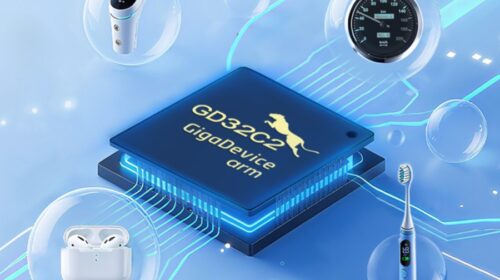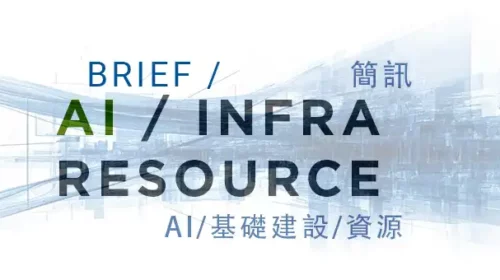Sun shines on JinkoSolar, but clouds loom on the horizon

The company’s profit more than doubled in the third quarter as booming demand and plunging polysilicon costs more than offset falling prices for its solar modules
Key Takeaways:
- JinkoSolar’s shipments doubled in the third quarter, but its revenue grew at a slower 63% as prices for its solar modules fell
- The company said it is “confident” of beating its recently upgraded annual shipment forecast thanks to booming global demand
By Doug Young
Solar module prices may be plunging, but prices for the polysilicon that’s their main ingredient are falling even faster. That discrepancy is not only fueling an unexpected global boom in demand for solar modules, but is also fattening both the top and bottom lines for their manufacturers.
Both trends were shining prominently in the latest results from JinkoSolar Holding Co. Ltd. (JKS.US; 688223), one of the world’s top solar panel makers, which reported its shipments doubled year-on-year in the third quarter. The surging demand helped the company not only to beat its own earlier revenue guidance for the quarter, but also prompted it to predict it would beat its own full-year guidance that it already revised upward just three months earlier.
Investors liked the overall story from the results, bidding JinkoSolar’s shares up 14% after the report came out on Monday in New York.
But we should note the stock is still quite beaten down, even after the rally. JinkoSolar’s stock now trades at a price-to-earnings (P/E) ratio of just 3, which is even lower than its lesser-known Chinese rival Canadian Solar’s (CSIQ.US) 3.3. The company’s China-listed peers Trina (688599.SH) and Longi (601012.SH) both trade significantly higher at 11, though we should note that Jinko’s own China-listed stock trades ahead of those two at 17.
So, it seems that perhaps U.S. investors know something that Chinese ones don’t. Their concerns are probably twofold, involving geopolitical factors and also concerns over future pricing trends.
The geopolitical factors are related to Western worries over China’s dominance of the solar module sector, which has led to constant threats of protective tariffs – especially by the U.S. JinkoSolar is one of the few major Chinese names that’s addressing that issue with its launch of a major U.S. manufacturing base in the state of Florida in 2019. The company said earlier this year that a major 1 GW expansion of that facility began production last month.
Meantime, the pricing trends that have investors worried are a global phenomenon that’s beyond JinkoSolar’s control. Data from pvXchange shows prices for solar modules are down sharply this year through October, falling anywhere from 32% for highest efficiency models since January, to as much as 42% for lower-end product.
But as we noted earlier, the cost for polysilicon, the main ingredient in solar modules, has plunged even more after reaching record highs in 2022. China-based Daqo New Energy (DQ.US; 688303.SH), one of the industry’s leading producers, said its average sell price (ASP) for polysilicon tumbled by more than three-quarters to $7.68 per kilogram in the third quarter from $36.44 a year earlier, according to its latest results also released on Monday.
JinkoSolar pointed out the plunging polysilicon prices were the main factor that helped its gross margin improve to 19.3% in the third quarter from 15.7% a year earlier. But whereas polysilicon prices seem likely to bottom out soon, there’s no indication that the prices for finished solar modules are anywhere near bottom just yet.
Revenue gains
All of the trends we’ve just described are reflected in different ways in JinkoSolar’s latest results. The company’s overall shipments, consisting mostly of solar modules but also including some solar cells and polysilicon wafers, rose 108% year-on-year to 22.6 GW for the quarter. Its revenue also rose strongly, but at a far slower pace of 63% year-on-year to 31.8 billion yuan ($4.4 billion), reflecting the falling module prices that we’ve described above.
“Since the third quarter, price declines in the supply chain have stimulated end demand,” said JinkoSolar Chairman Li Xiande in the earnings announcement.
The company’s home China market exemplified the booming demand. Li said that new solar power installations in the country totaled 128.9 GW in the first nine months of this year alone, nearly 50% more than the country’s new installations for all 2022. JinkoSolar also announced another major deal last week to supply 3.8 GW of its solar modules to a Saudi Arabian customer – an order that should generate $2 billion or more in revenue depending on how prices trend.
The booming demand led JinkoSolar to forecast its fourth-quarter module shipments would reach 23 GW, up from 21.4 GW in the third quarter. It also said it was “confident” its full-year module shipments would exceed the 70 GW to 75 GW guidance it gave just three months earlier. That guidance itself represented a sharp upgrade from the 60 GW to 70 GW forecast the company gave for its 2023 module shipments at the start of this year.
This particular boom looks good for the sector right now, and helped JinkoSolar to more than double its latest quarterly profit to 1.32 billion yuan from 550 million yuan a year earlier. But if past is any indicator of the future, this latest boom will almost certainly be followed by a sharp correction that is already starting to take shape. And so it goes.
We’ll close with a few footnotes that could be sources for concern going forward. Most notable is the recent slide in China’s currency, the yuan, which is affecting all Chinese companies. JinkoSolar reported a net foreign exchange loss of nearly 300 million yuan in the third quarter related to the yuan’s slide, in sharp contrast to a 520 million yuan net exchange gain a year earlier.
The company also appears to be consuming cash recently, with the figure falling nearly 20% to 14.1 billion yuan at the end of September from 17 billion yuan at the end of June. At least some of that probably went to repay maturing debt, since the company’s interest-bearing debt fell to 30.8 billion yuan at the end of September from 34.3 billion yuan three months earlier.
Another slightly worrisome sign was the company’s third-party accounts receivables, which grew to 25.8 billion yuan at the end of September from 16.7 billion yuan at the end of last year. But that kind of rise is probably expected due to the company’s big rise in overall sales.
At the end of the day, JinkoSolar is sitting quite pretty at the moment due to the plunge in polysilicon prices. Those days of sunshine could end soon, however, as prices for its own finished modules are likely to continue falling as well. Still, the company’s U.S.-listed shares look a bit oversold at their current levels.
Have a great investment idea but don’t know how to spread the word? We can help! Contact us for more details.
The Bamboo Works offers a wide-ranging mix of coverage on U.S.- and Hong Kong-listed Chinese companies, including some sponsored content. For additional queries, including questions on individual articles, please contact us by clicking here.
To subscribe to Bamboo Works free weekly newsletter, click here






